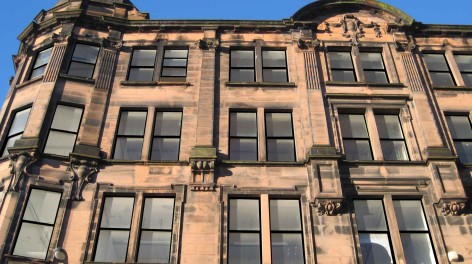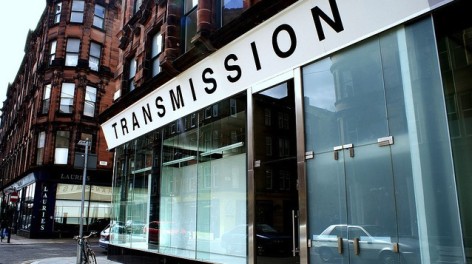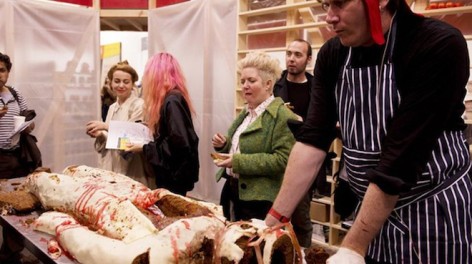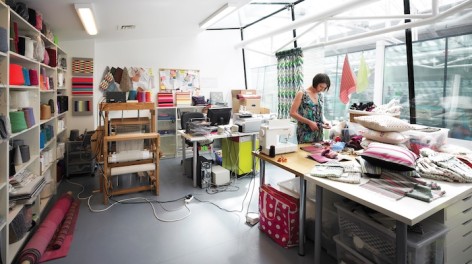A weekend in Glasgow, at Glasgow International






Transmission Gallery (courtesy Merchant City Marketing); artist Angharad Mclaren & South Block (both courtesy South Block); Bedwyr Williams and Transmisson cafe (both courtesy Transmission)
Glasgow has long had the edge when it comes to contemporary art. Our guide to its biennial festival, and the places to eat, drink and shop en route, ensures you make the most of both the art and the city.
The Glasgow International map features 53 separate sites, dotted around the city centre’s regimented street grid and edging out in all directions to the more unruly suburbs. This biennial festival of contemporary art infiltrates the city’s existing (and extensive) art infrastructure and adds a wealth of new, temporary venues and public sites for its 18 days.
Now in its sixth edition – and the first under new director Sarah McCrory – Glasgow International is both in and of the city. Shows by visiting international artists rub shoulders with exhibitions from equally well-travelled locals, and the sense of the city’s healthy cultural confidence is palpable.
For your visit to GI, start on Osborne Street at the Festival Hub in South Block, home to artists studios, creative businesses and All That Is Coffee – an artisan espresso outlet that also knows its way around a good cup of tea and a chai latte. Here you’ll find yourself within striking distance of some of Glasgow’s best independent bars, cafes and – of course – gallery spaces. A short walk up Osborne Street there’s The Modern Institute, for example, a commercial gallery with a 40-strong roster of artists that includes four Turner Prize winners. For GI, the gallery is hosting group show, Life & The Invitation& Vapour in Debri&.The Modern Institute’s other space nearby on Aird’s Lane is showing New York-based artist Anne Collier.
The singer looks much as he did in the 1980s. Must be the healthy Glasgow lifestyle.
While you’re in this part of town, you should also visit the artist-run Transmission Gallery on King Street – showing Puerto Rico’s Beatriz Santiago Muñoz – and its neighbours Street Level Photoworks (Latvian artist Arnis Balcus and the Netherlands’ Johan Nieuwenhuize) and Glasgow Print Studio (Glasgow artist Alex Frost). The Print Studio has an easy to browse shop with a fantastic collection of new and archive prints by Scottish and international artists.
Ready for a break? Get yourself to Once Upon A Tart on the opposite side of the street, a kitchen and bakery where you can indulge in home-baked treats of the sweet or savoury kind. If it’s alcohol you’re after, then try Mono, a bar and gig venue that serves vegan food and – curiously and brilliantly – has a record shop attached to it, run by the singer in legendary Glasgow indie band The Pastels. He’ll most likely be behind the counter, sifting through vinyl and looking pretty much as he did in the 1980s. Must be the healthy Glasgow lifestyle.
Where now? Further east, perhaps, to Charlotte Street where Hardeep Pandhal presents Jojoboys, a series of lamppost banners that explore the history and visual identity of Camp Coffee. (The factory that first made this coffee substitute, originally created in 1885 for Scottish soldiers in India, once stood on the street.) There’s more to see in the East End, such as the David Dale Gallery (showing Swiss artist Claudia Comte), but the other main cluster of GI activity is to the west of the city centre on Sauchiehall Street. Head on foot along Argyle Street, turn right onto Queen Street, and be sure to stop off on your way at GoMA (Gallery of Modern Art). Housed in a neo-Classical building built in 1778, it is showing the first major UK solo exhibition by Berlin-based Alexsandra Domanovic, as well as work by Modern Institute artist Sue Tompkins.
Now continue west towards Buchanan Street, where Glasgow comes to shop for shoes, clothes and all things Apple. If you’re in need of (more) good coffee, check out local chain Tinderbox, either in the upmarketPrincess Square shopping centre or back east along Ingram Street, described by Glasgow’s marketers as “the city’s most exclusive fashion boulevard”. Which means Jigsaw, Ralph Lauren, Mulberry and a nearby Armani store.
At the top of Buchanan Street, turn left onto Sauchiehall Street by the Royal Concert Hall. A short walk will take you to McLellan Galleries, which has been brought out of its slumber for GI. Built in 1856 and now rarely used, it is hosting video work from Jordan Wolfson, paintings by Avery Singer, sculptural and audio-visual installations from Glasgow-based Charlotte Prodger, and a retrospective of Hudinilson Jr, the Sao Paulo-based artist who died earlier this year.
There’s another retrospective – this time of Palestinian artist Khaled Hourani – at the nearby Centre for Contemporary Arts (CCA), as well as work by the four artists shortlisted for the Jerwood/Film and Video Umbrella Awards. With its airy indoor courtyard café, performance spaces and the Welcome Home craft and design store, CCA is a good place to linger. It’s got a great bookshop, too.
To the rear of CCA, you’ll find the Charles Rennie Mackintosh-designed Glasgow School of Art (showing Michael Stumpf’s wittily-observed sculptures), and opposite it you can’t miss the brand new Reid Building, clad in frosted glass panels and glancing knowingly at Mackintosh’s 1909 masterpiece.
There’s more to take in heading west, from Simon Martin at the Kelvingrove Art Gallery and Museum to the foodie delights of the bars and restaurants on the Finnieston stretch of Argyle Street – tryCrabshakk, where super-fresh seafood is handled with care, served with understated style and has even won the praise of Observer food critic, Jay Rayner.
Jump in a car or taxi now and head to the South Side – over the Clyde toTramway on Albert Drive, which is showing three decades of work by American video and performance artist Michael Smith, along with a new commission from Welsh artist Bedwyr Williams. Further south, the disused Govanhill Baths features inflatable sculptures by Anthea Hamilton and Nicholas Byrne, and there’s more work on show at the artist-run Queens Park Railway Club. And with a name like that, how can you resist paying a visit?































